Roll Formed Angles
Angles provide two directional support, in hidden or exposed applications. Slots, notches and other holes are often included. Cold roll formed angles have many advantages over hot mill formed angle iron. Lower quantities can be cost effective and pre- and post-fabrications are cheaply done and with better results. Overall, tolerances are closer to true with less deformity in gage. Angles are ubiquitous in hundreds of industries, anywhere cheap but effective support, strengthening, stiffening, edging, bracing and framing is required, especially in construction.
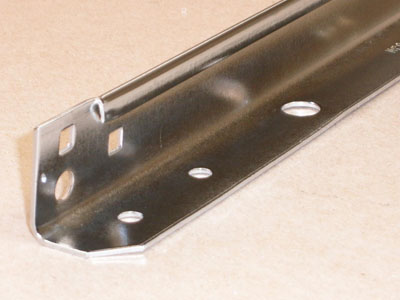
- A-101
1.4" x 1.9", A-101 14 gauge roll formed galvanized track. An Angle is defined as an L-shaped profile when lying on one of its two sides. Angles are typically used as structural elements or for repairs. It is one of the most commonly used shapes. They are formed by bending a single angle in a piece of steel. The most common Angle Steel is 'L' shaped at a 90 degree angle. The legs of the “L” can be equal or unequal in length. Steel angles are used for various purposes in a number of industries. Holes, notches and slots can often be included to avoid secondary operations. As a coil-based process, economical production quantities begin around 5,000 lineal feet. Custom lengths are available to meet OEM requirements.

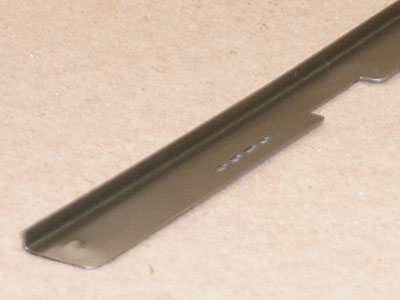
- A-102
0.1" x 0.6", A-102 28 gauge roll formed stainless stiffener. An Angle is defined as an L-shaped profile when lying on one of its two sides. Angles are typically used as structural elements or for repairs. It is one of the most commonly used shapes. They are formed by bending a single angle in a piece of steel. The most common Angle Steel is 'L' shaped at a 90 degree angle. The legs of the “L” can be equal or unequal in length. Steel angles are used for various purposes in a number of industries. Holes, notches and slots can often be included to avoid secondary operations. As a coil-based process, economical production quantities begin around 5,000 lineal feet. Custom lengths are available to meet OEM requirements.

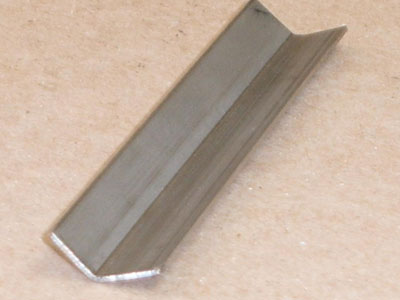
- A-103
0.3" x 0.7", A-103 22 gauge roll formed stainless angle. An Angle is defined as an L-shaped profile when lying on one of its two sides. Angles are typically used as structural elements or for repairs. It is one of the most commonly used shapes. They are formed by bending a single angle in a piece of steel. The most common Angle Steel is 'L' shaped at a 90 degree angle, however other angles are possible. The legs of the “L” can be equal or unequal in length. Steel angles are used for various purposes in a number of industries. As a coil-based process, economical production quantities begin around 5,000 lineal feet. Custom lengths are available to meet OEM requirements.

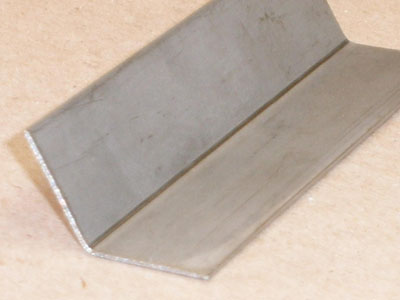
- A-104
0.8" x 1.5", A-104 20 gauge roll formed stainless angle. An Angle is defined as an L-shaped profile when lying on one of its two sides. Angles are typically used as structural elements or for repairs. It is one of the most commonly used shapes. They are formed by bending a single angle in a piece of steel. The most common Angle Steel is 'L' shaped at a 90 degree angle, however other angles are possible. The legs of the “L” can be equal or unequal in length. Steel angles are used for various purposes in a number of industries. As a coil-based process, economical production quantities begin around 5,000 lineal feet. Custom lengths are available to meet OEM requirements.

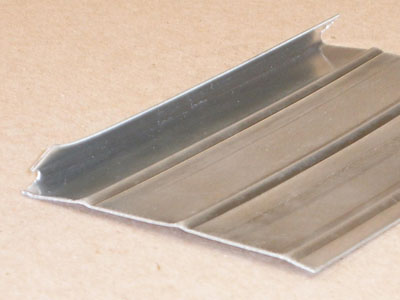
- A-105
0.4" x 3", A-105 roll formed aluminum angle. This angle shows stiffening ribs to add support to the large flat leg. An Angle is defined as an L-shaped profile when lying on one of its two sides. Angles are typically used as structural elements or for repairs. It is one of the most commonly used shapes. They are formed by bending a single angle in a piece of metal. The most common Angle Steel is 'L' shaped at a 90 degree angle, however other angles are possible. The legs of the “L” can be equal or unequal in length. Aluminum angles are used for various purposes in a number of industries such as Starter Strip for Siding. As a coil-based process, economical production quantities begin around 5,000 lineal feet. Custom lengths are available to meet OEM requirements.

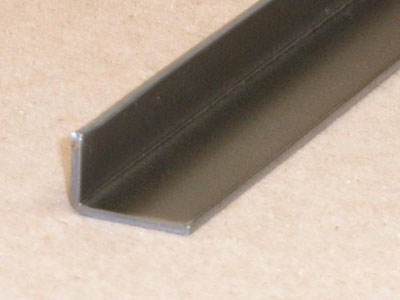
- A-107
0.5" x 0.8", A-107 16 gauge roll formed stiffener angle. An Angle is defined as an L-shaped profile when lying on one of its two sides. Angles are typically used as structural elements or for repairs. It is one of the most commonly used shapes. They are formed by bending a single angle in a piece of steel. The most common Angle Steel is 'L' shaped at a 90 degree angle. The legs of the “L” can be equal or unequal in length. Steel angles are used for various purposes in a number of industries. As a coil-based process, economical production quantities begin around 5,000 lineal feet. Custom lengths are available to meet OEM requirements.

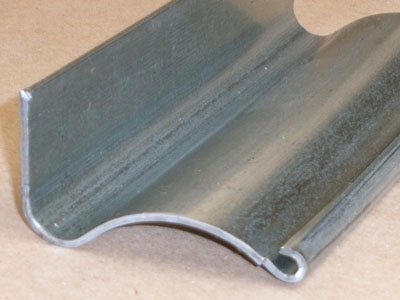
- A-108
1.5" x 3", A-108 14 gauge roll formed latch plate angle channel. This Angle shows an Arc that mates to component parts of an awning assembly. An Angle is defined as an L-shaped profile when lying on one of its two sides. Angles are typically used as structural elements or for repairs. It is one of the most commonly used shapes. They are formed by bending a single angle in a piece of steel. The most common Angle Steel is 'L' shaped at a 90 degree angle. The legs of the “L” can be equal or unequal in length. Steel angles are used for various purposes in a number of industries. As a coil-based process, economical production quantities begin around 5,000 lineal feet. Custom lengths are available to meet OEM requirements.

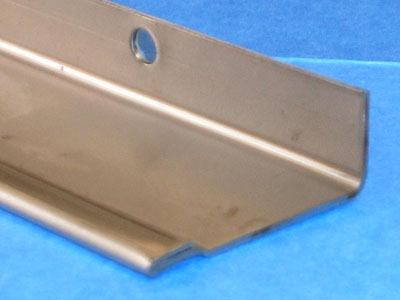
- A-109
0.7" x 1.8", A-109 16 gauge roll formed angled apron. An Angle is defined as an L-shaped profile when lying on one of its two sides. Angles are typically used as structural elements or for repairs. It is one of the most commonly used shapes. They are formed by bending a single angle in a piece of steel. The most common Angle Steel is 'L' shaped at a 90 degree angle. The legs of the “L” can be equal or unequal in length. Steel angles are used for various purposes in a number of industries. Holes, notches and slots can often be included to avoid secondary operations. As a coil-based process, economical production quantities begin around 5,000 lineal feet. Custom lengths are available to meet OEM requirements.

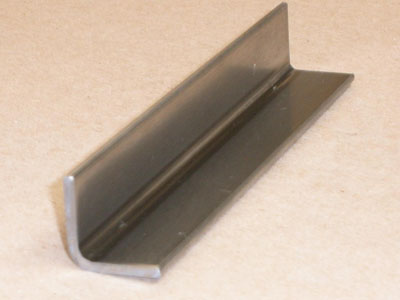
- A-110
1" x 1", A-110 11 gauge roll formed stainless angle. An Angle is defined as an L-shaped profile when lying on one of its two sides. Angles are typically used as structural elements or for repairs. It is one of the most commonly used shapes. They are formed by bending a single angle in a piece of steel. The most common Angle Steel is 'L' shaped at a 90 degree angle, however other angles are possible. The legs of the “L” can be equal or unequal in length. Steel angles are used for various purposes in a number of industries. As a coil-based process, economical production quantities begin around 5,000 lineal feet. Custom lengths are available to meet OEM requirements.

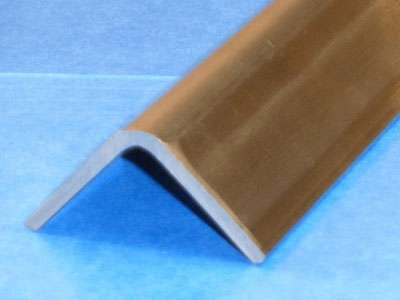
- A-111
1.3" x 1.3", A-111 11 gauge roll formed stainless angle. An Angle is defined as an L-shaped profile when lying on one of its two sides. Angles are typically used as structural elements or for repairs. It is one of the most commonly used shapes. They are formed by bending a single angle in a piece of steel. The most common Angle Steel is 'L' shaped at a 90 degree angle, however other angles are possible. The legs of the “L” can be equal or unequal in length. Steel angles are used for various purposes in a number of industries. As a coil-based process, economical production quantities begin around 5,000 lineal feet. Custom lengths are available to meet OEM requirements.

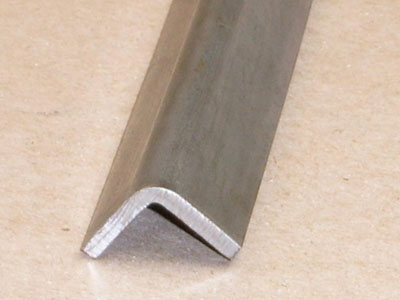
- A-112
0.5" x 1", A-112 10 gauge roll formed angle. An Angle is defined as an L-shaped profile when lying on one of its two sides. Angles are typically used as structural elements or for repairs. It is one of the most commonly used shapes. They are formed by bending a single angle in a piece of steel. The most common Angle Steel is 'L' shaped at a 90 degree angle, however other angles are possible. The legs of the “L” can be equal or unequal in length. Steel angles are used for various purposes in a number of industries. As a coil-based process, economical production quantities begin around 5,000 lineal feet. Custom lengths are available to meet OEM requirements.

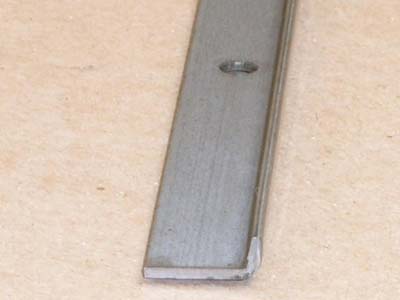
- A-113
0.2" x 0.6", A-113 16 gauge roll formed angle with holes. An Angle is defined as an L-shaped profile when lying on one of its two sides. Angles are typically used as structural elements or for repairs. It is one of the most commonly used shapes. They are formed by bending a single angle in a piece of steel. The most common Angle Steel is 'L' shaped at a 90 degree angle. The legs of the “L” can be equal or unequal in length. Steel angles are used for various purposes in a number of industries. Holes, notches and slots can often be included to avoid secondary operations. As a coil-based process, economical production quantities begin around 5,000 lineal feet. Custom lengths are available to meet OEM requirements.

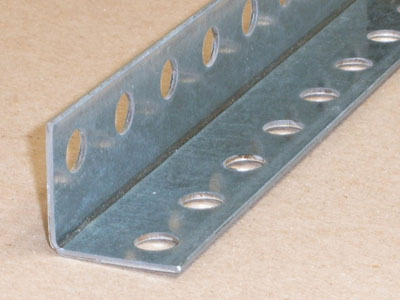
- A-114
1.3" x 1.3", A-114 14 gauge roll formed angle with holes. An Angle is defined as an L-shaped profile when lying on one of its two sides. Angles are typically used as structural elements or for repairs. It is one of the most commonly used shapes. They are formed by bending a single angle in a piece of steel. The most common Angle Steel is 'L' shaped at a 90 degree angle. The legs of the “L” can be equal or unequal in length. Steel angles are used for various purposes in a number of industries. Holes, notches and slots can often be included to avoid secondary operations. As a coil-based process, economical production quantities begin around 5,000 lineal feet. Custom lengths are available to meet OEM requirements.

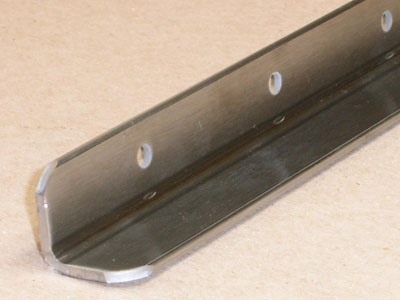
- A-115
1" x 1", A-115 stainless roll formed angle with holes. An Angle is defined as an L-shaped profile when lying on one of its two sides. Angles are typically used as structural elements or for repairs. It is one of the most commonly used shapes. They are formed by bending a single angle in a piece of steel. The most common Angle Steel is 'L' shaped at a 90 degree angle. The legs of the “L” can be equal or unequal in length. Steel angles are used for various purposes in a number of industries. Holes, notches and slots can often be included to avoid secondary operations. As a coil-based process, economical production quantities begin around 5,000 lineal feet. Custom lengths are available to meet OEM requirements.

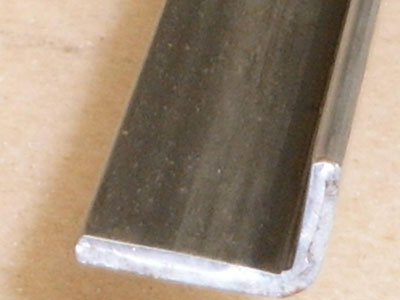
- A-116
0.7" x 0.7", A-116 11 gauge roll formed hot rolled angle. An Angle is defined as an L-shaped profile when lying on one of its two sides. Angles are typically used as structural elements or for repairs. It is one of the most commonly used shapes. They are formed by bending a single angle in a piece of steel. The most common Angle Steel is 'L' shaped at a 90 degree angle. The legs of the “L” can be equal or unequal in length. Steel angles are used for various purposes in a number of industries. As a coil-based process, economical production quantities begin around 5,000 lineal feet. Custom lengths are available to meet OEM requirements.

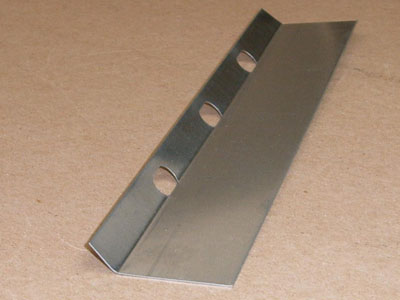
- A-117
0.5" x 1.5", A-117 25 gauge galvanized roll formed one leg batten. An Angle is defined as an L-shaped profile when lying on one of its two sides. Angles are typically used as structural elements or for repairs. It is one of the most commonly used shapes. They are formed by bending a single angle in a piece of steel. The most common Angle Steel is 'L' shaped at a 90 degree angle. The legs of the “L” can be equal or unequal in length. Steel angles are used for various purposes in a number of industries. Holes, notches and slots can often be included to avoid secondary operations. As a coil-based process, economical production quantities begin around 5,000 lineal feet. Custom lengths are available to meet OEM requirements.

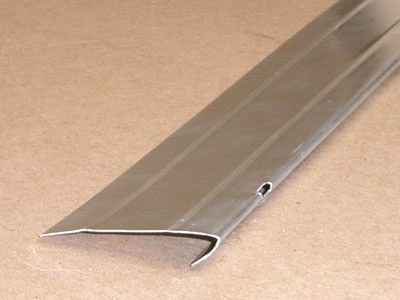
- A-118
0.5" x 2.5", A-118 roll formed aluminum starter strip. This angle shows stiffening ribs to add support to the large flat leg. An Angle is defined as an L-shaped profile when lying on one of its two sides. Angles are typically used as structural elements or for repairs. It is one of the most commonly used shapes. They are formed by bending a single angle in a piece of metal. The most common Angle Steel is 'L' shaped at a 90 degree angle, however other angles are possible. The legs of the “L” can be equal or unequal in length. Aluminum angles are used for various purposes in a number of industries such as Starter Strip for Siding. As a coil-based process, economical production quantities begin around 5,000 lineal feet. Custom lengths are available to meet OEM requirements.

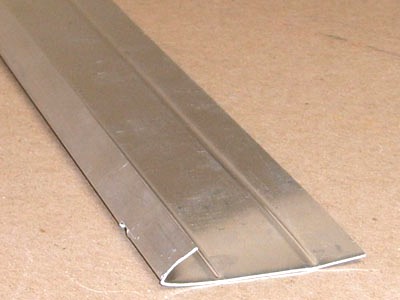
- A-118
unknown size, A-118 starter strip. This angle shows stiffening ribs to add support to the large flat leg. An Angle is defined as an L-shaped profile when lying on one of its two sides. Angles are typically used as structural elements or for repairs. It is one of the most commonly used shapes. They are formed by bending a single angle in a piece of metal. The most common Angle Steel is 'L' shaped at a 90 degree angle, however other angles are possible. The legs of the “L” can be equal or unequal in length. Aluminum angles are used for various purposes in a number of industries such as Starter Strip for Siding. As a coil-based process, economical production quantities begin around 5,000 lineal feet. Custom lengths are available to meet OEM requirements.

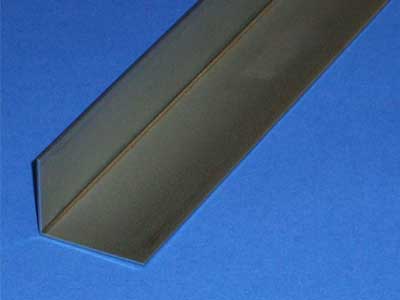
- A-119
16 gauge 1.5" x 2" galvanized angle. An Angle is defined as an L-shaped profile when lying on one of its two sides. Angles are typically used as structural elements or for repairs. It is one of the most commonly used shapes. They are formed by bending a single angle in a piece of steel. The most common Angle Steel is 'L' shaped at a 90 degree angle. The legs of the “L” can be equal or unequal in length. Steel angles are used for various purposes in a number of industries. Holes, notches and slots can often be included to avoid secondary operations. As a coil-based process, economical production quantities begin around 5,000 lineal feet. Custom lengths are available to meet OEM requirements.

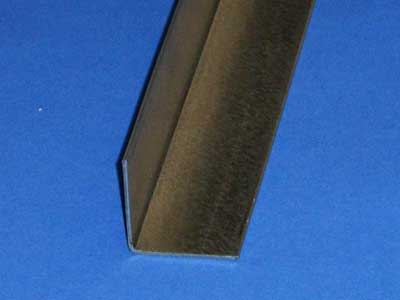
- A-120
16 gauge 1.5" x 1.5" galvanized angle. An Angle is defined as an L-shaped profile when lying on one of its two sides. Angles are typically used as structural elements or for repairs. It is one of the most commonly used shapes. They are formed by bending a single angle in a piece of steel. The most common Angle Steel is 'L' shaped at a 90 degree angle. The legs of the “L” can be equal or unequal in length. Steel angles are used for various purposes in a number of industries. Holes, notches and slots can often be included to avoid secondary operations. As a coil-based process, economical production quantities begin around 5,000 lineal feet. Custom lengths are available to meet OEM requirements.

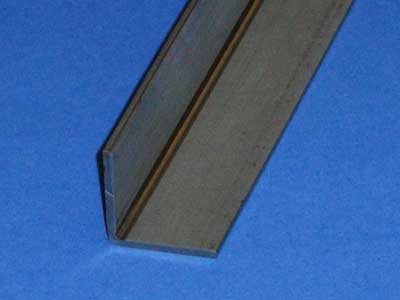
- A-121
12 gauge 1.25" x 1.25" galvanized angle. An Angle is defined as an L-shaped profile when lying on one of its two sides. Angles are typically used as structural elements or for repairs. It is one of the most commonly used shapes. They are formed by bending a single angle in a piece of steel. The most common Angle Steel is 'L' shaped at a 90 degree angle. The legs of the “L” can be equal or unequal in length. Steel angles are used for various purposes in a number of industries. Holes, notches and slots can often be included to avoid secondary operations. As a coil-based process, economical production quantities begin around 5,000 lineal feet. Custom lengths are available to meet OEM requirements.

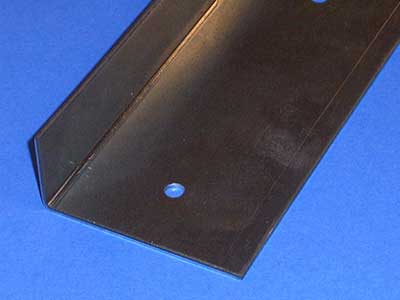
- A-122
14-16 gauge 1.25" x 3" galvanized angle. An Angle is defined as an L-shaped profile when lying on one of its two sides. Angles are typically used as structural elements or for repairs. It is one of the most commonly used shapes. They are formed by bending a single angle in a piece of steel. The most common Angle Steel is 'L' shaped at a 90 degree angle. The legs of the “L” can be equal or unequal in length. Steel angles are used for various purposes in a number of industries. Holes, notches and slots can often be included to avoid secondary operations. As a coil-based process, economical production quantities begin around 5,000 lineal feet. Custom lengths are available to meet OEM requirements.

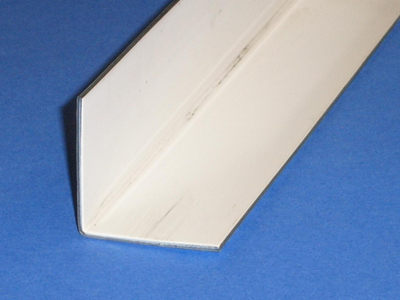
- A-123
1-1/2" x 1-1/2" Angle in 16 Gauge, Pre-painted Galvanized Steel. This profile is a basic type of roll-formed steel. The 90 degree "L" shape is the most common angle. The legs of the “L” can be equal or unequal in length. A popular application is as a steel stiffener. Steel stiffeners are used for various applications in a variety of industries. Custom lengths are available for OEM production requirements.

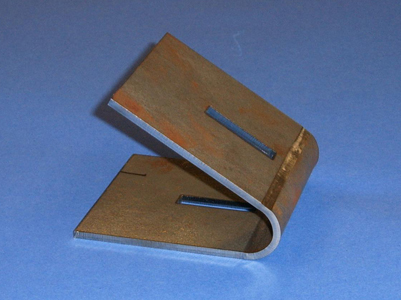
- A-124
2.75" wide x 3.5” high Angle in 10 Gauge, Hot Rolled, Pickled and Oiled Steel. Steel Angles are a basic type of roll-formed steel. Typically, the Angle is 'L' shaped with the most common profiles formed at a 90-degree angle. Other angles are possible as this profile shows. The legs of the “L” can be equal or unequal in length. Steel angles are used for various applications in a variety of industries. Custom lengths are available for OEM production requirements.

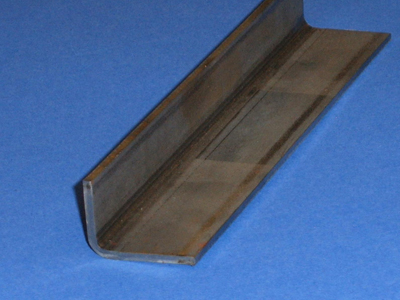
- A-125
0.75" x 1" Angle in 12 Gauge, Hot Rolled, Pickled and Oiled Steel. Steel Angles are a basic type of roll-formed steel. Typically the Angle is 'L' shaped with the most common profiles formed at a 90 degree angle. The legs of the “L” can be equal or unequal in length. Steel angles are used for various applications in a variety of industries. Custom lengths are available for OEM production requirements.
